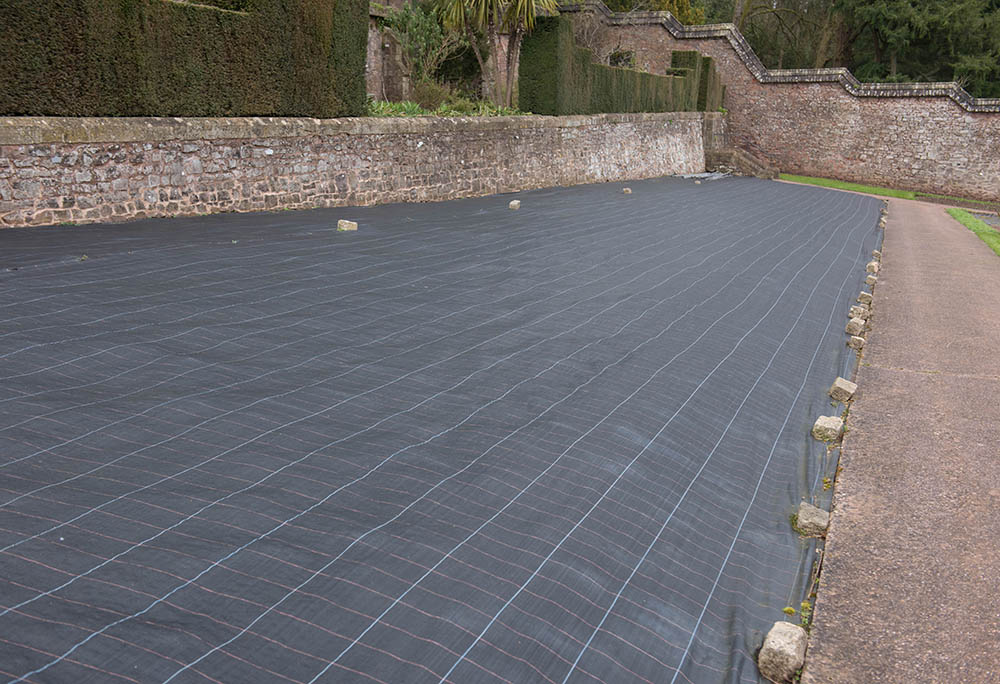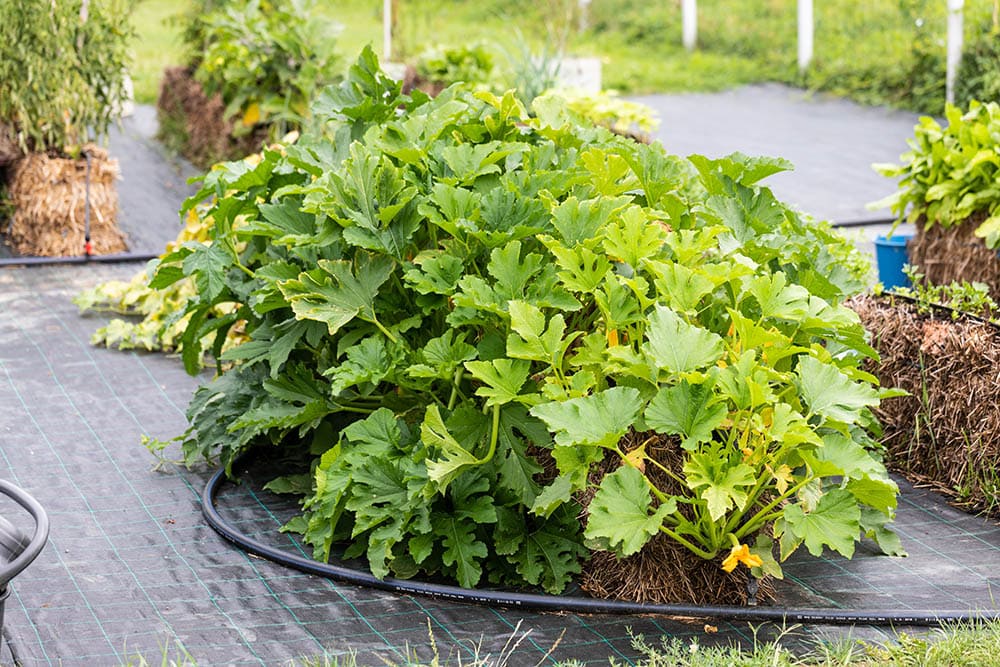Is Landscape Fabric Safe for Vegetable Gardens? Pros & Cons
-
Ingrid Yeh
- Last updated:

Landscape fabric can prove to be a safe and effective weed control method for the avid gardener. Durable and designed to last, it’s commonly used around trees, shrubs, and other long-standing plants where it can be covered with quality mulch to support years and years of growth. However, because it is meant to be left in place, landscape fabric may not always be the most ideal method for use with seasonal planting—like with vegetable gardens or annual flower beds.
Read on to understand the pros and cons of using landscape fabric and decide for yourself whether it is a good option for your vegetable gardening needs.
What Exactly is Landscape Fabric?
Landscape fabric, also known as weed fabric, is a textile material designed to get rid of pesky weeds in your garden and keep them away. Made from woven fibers of synthetic or organic material, landscape fabric acts as a physical barrier preventing unwanted weed growth wherever it’s used.
Some landscape fabric is made of woven fibers that aid in plant root growth. Others are made with UV protection to maintain the life and longevity of the fabric. Regardless of what kind, landscape fabric is generally safe for your plants as using it is more of a preventative measure that doesn’t involve using any potentially toxic chemicals to rid your garden of weeds.
Easy to find at your local hardware and garden supply store or online, landscape fabric either comes in rolls of woven fiber or as solid sheets with perforated holes in it and are usually between 3ft and 6ft wide.

Advantages of Using Landscape Fabric For Growing Vegetables
Gardeners and green thumbs of all levels can enjoy the many benefits of using landscape fabric. While primarily used for keeping unwanted weeds in check, using it comes along with some other key advantages for your gardening needs. Some of the advantages of landscape fabric include:
- It works wonders to fend off weeds from taking over your garden, as well as prevent new weed seedlings from sprouting by blocking the sun and air that they need to grow.
- By reducing and preventing weed growth, it saves you time and energy and significantly cuts down on other gardening chores that need to be done.
- It helps to keep your garden healthy by building up needed moisture that your plants need to flourish, as well as retaining such moisture by decreasing natural evaporation caused by the sun and wind.
- It significantly reduces and even eliminates the need to use toxic chemicals in the form of herbicides to keep weeds in control.
Find a brick and stone specialist in your area, and get free, no-commitment estimates for your project.Consult a landscaping expert


Disadvantages of Using Landscape Fabric For Growing Vegetables
Despite its benefits, there are some gardeners who are opposed to using landscape fabric. As with anything, where there are pros there are cons. Some notable disadvantages associated with using landscape fabric include:
- Despite significantly reducing the growth of weeds in your garden, it doesn’t completely eliminate the problem as weed seeds can still grow in certain mulches used to cover the fabric, blow in with the wind, or find other ways to grow around the fabric. Further, removing weeds with landscape fabric covering your garden is that much more difficult of a process.
- It can make soil unhealthy by making it too hard and compact underneath the fabric, which may make it difficult for your plants to grow at their best.
- It prevents earthworms from doing what they naturally do to aerate the soil, which robs your soil and the vegetables growing in it from reaping all the many benefits of these garden-friendly creatures.
- It makes reseeding nearly impossible, as fallen seeds from your vegetables and other plants can’t reach the soil nor sprout with the fabric in their way.
Final Thoughts
So, there you have it—the pros and cons of vegetable gardening with landscape fabric. Hopefully, this information is what you need to make an informed decision of whether it’s the best option for you and your vegetable garden.
For more short-term and seasonal gardening, as with growing vegetables, landscape fabric may just end up complicating things—such as when wanting to replant or rearrange certain vegetables in your garden from their original location. Some gardeners are of the opinion that using landscape fabric for growing vegetables, something grown to be eaten, is unnatural and has too many setbacks to be considered a good method.
At the end of the day, the whole idea behind trying new things is to make it easier and more enjoyable. Ultimately the decision is yours whether the pros of using landscape fabric for your vegetable garden outweigh the cons enough to give it a try.
Featured Image Credit: FotoHelin, Shutterstock
Contents

